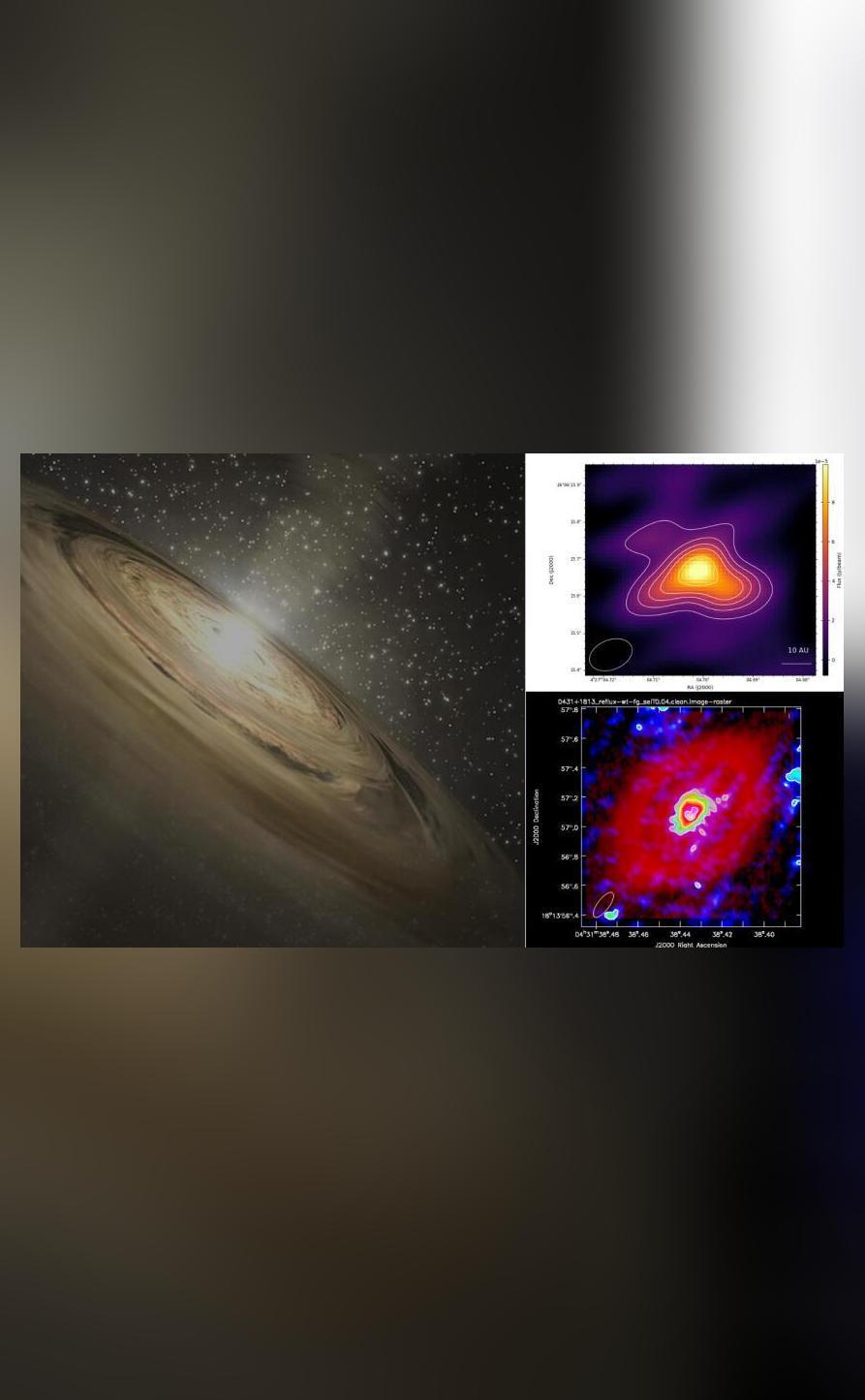
Planet-forming ‘pebbles’ detected around 2 distant young stars
The formation of planets is a complex and fascinating process that has captivated scientists for centuries. Recently, astronomers have made a groundbreaking discovery that sheds light on the early stages of planetary formation. According to a study published by the Royal Astronomical Society, researchers have detected planet-forming “pebbles” around two young stars, DG Tau and HL Tau, located about 450 light-years away.
These pebbles are believed to gradually merge and form planets, similar to the way Jupiter is thought to have formed 4.5 billion years ago. The discovery provides valuable insights into the early stages of planetary formation and the conditions that led to the creation of our own solar system.
The study used e-MERLIN, an interferometer array of seven radio telescopes spanning 217 km across the UK. This innovative technology allowed researchers to observe the young stars with unprecedented resolution, revealing the presence of pebbles in their orbits.
Pebbles are small, meter-sized particles that are thought to be the building blocks of planets. They are formed when dust and ice in the disk surrounding a young star collide and stick together. Over time, these pebbles can grow and merge, eventually forming larger bodies such as planets.
The detection of pebbles around DG Tau and HL Tau is significant because it suggests that these young stars are in the early stages of planetary formation. The presence of pebbles in their orbits indicates that the conditions are ripe for the formation of planets, and that the process of planetary formation is underway.
The study’s lead author, Dr. Jane Greaves, explained the significance of the discovery: “These pebbles are the precursors to planets. They’re the building blocks that will eventually come together to form massive worlds like Jupiter or even the Earth.”
The researchers used e-MERLIN to observe the young stars in the infrared range, which allowed them to detect the faint heat emitted by the pebbles. By analyzing the data, they were able to map the orbits of the pebbles and determine their sizes and temperatures.
The discovery of pebbles around DG Tau and HL Tau provides valuable insights into the early stages of planetary formation. It suggests that the conditions that led to the formation of our own solar system may be more common than previously thought, and that the process of planetary formation may be more complex and dynamic than previously believed.
The study also highlights the importance of continued research into the early stages of planetary formation. By studying the formation of planets around young stars, scientists can gain a better understanding of the conditions that led to the creation of our own solar system and the potential for life on other planets.
In conclusion, the detection of planet-forming “pebbles” around two distant young stars is a significant discovery that sheds light on the early stages of planetary formation. The study provides valuable insights into the conditions that led to the formation of our own solar system and the potential for life on other planets. As scientists continue to study the formation of planets, we may uncover even more secrets about the origins of our universe and the potential for life beyond Earth.
News Source:
https://ras.ac.uk/news-and-press/research-highlights/birth-solar-system-revealed-planet-pebbles






